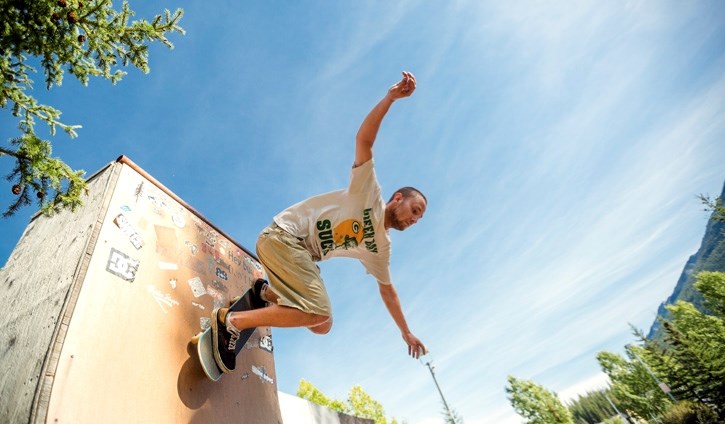Banff’s $1.1 million skateboard park is coming in over budget, but municipal officials are looking at ways to address the situation.
Town of Banff officials say geo-technical investigation at the recreation grounds revealed significantly more underground work than anticipated needs to be done in preparation for skateboard park development, increasing the cost of the long-awaited project.
Mary Brewster, Banff’s recreation manager, said three options for the skateboard park were identified, including one favoured by the skateboarding community with all the features they had identified in the planning process.
“With these extra costs in terms of geo-tech and so on, we’re now in a position where we’ve got the ideal skateboard park, which is about $150,000 more than we have in the budget. Skateboarders really want that project,” she said.
“I’m quite confident by potentially moving different projects around, and potentially eliminating a couple of things we don’t feel are in the best interest for the community, that we can still have the ideal skate park and stay within or under the approved 2016-17 budget.”
Banff’s capital budget sets aside $1.1 million for the skateboard park. It’s part of the first phase of the $7.2 million redevelopment of the rec grounds, which will be carried out over 10 years.
The redevelopment plan calls for a 1,700 square metre skateboard park to accommodate some of the existing features such as the mini pipe currently popular with skateboarders, and include more features.
Banff’s recreation grounds lie within a flood plan, and the geo-technical work revealed that significantly more underground work needs to be done compared to the construction of skateboard parks elsewhere.
In addition to the higher than expected costs for geo-tech work, a 10 per cent contingency fund was also forgotten in the initial budget planning process. The budget has been since reworked to include a contingency fund.
Brewster said they’ve been looking at ways to have the project come in within the approved budget.
“Engineering has made up a little bit of a shopping list to determine whether or not we can find other ways to accomplish some of the work using local trades, and beg, borrowing and stealing, finding some new corporate partners, etc.,” Brewster said.
“We have one large grant application that we’re submitting, but there are no guarantees. You’ve seen we’ve applied for everything but the kitchen sink for this project without having success.”
Brewster said the skateboarding community has also expressed a willingness to contribute to additional fundraising efforts and give their time to try to make up some of the funding shortfall.
“I would remind council we didn’t ask any of our curlers, our hockey players or our skaters to fundraise for their $31 million facility,” she said.
Councillor Stavros Karlos said he’s not surprised by what the geo-tech work revealed.
“Nothing you’ve said comes as any surprise and, in fact, I’m actually pleased that we’ve gone through the geo-tech exercise in order to protect that asset in the long-term,” he said.
“Because we live within a space-constrained community, sometimes the ideal locations are not available to us. Sometimes that carries an additional cost and in this case, it’s geo-tech.”
Karlos, whose election campaign when he first ran for council included a permanent skateboard park, thanked Brewster for all the work she has done with the skateboarding community.
“Sometimes they feel like they’re forgotten, and in this they feel like they are very much part of the process,” he said.
The $7.2 million dollar redevelopment of the rec grounds is being carried out over 10 years, with the first phase estimated to cost about $2.6 million, including the long-awaited skateboard park.
The 7.4-hectare recreation grounds are currently home to a rugby-soccer pitch, three ball diamonds, two tennis courts, picnic areas, basketball court, playground, community greenhouse and temporary skateboard park.
Phase 2 of the rec grounds redevelopment in 2018-2019 comes with a $1.6 million price tag. That includes the $751,000 replacement of the north playground and $306,800 for improvements to the rugby-soccer pitch.
One of the more contentious proposals in the rec grounds redevelopment – removal of the east ball diamond – is earmarked for phase 3 of the plan in 2020-2021. The ball diamond would be replaced with a fenced off-leash dog area and a seasonal outdoor hockey-leisure skating rink that is flooded during winter and left as an open lawn space in the other seasons.
Construction of a multi-purpose building and a toboggan hill are also in the plan for those years. The total budget for Phase 3 is estimated to be $2.5 million.
Phase 4 in 2022-2023 would see construction of a new adventure playground, at a cost of $1.7 million. There would also be a children’s bike park and mini-skills course in that phase of the development.
The final phase of the development would also include a canoe landing on the Bow River.




